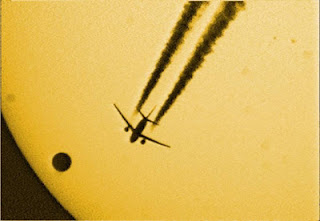Throughout the scientists and amateur astronomers are preparing for the transit of Venus. Scheduled, Venus will cross the face of the sun on 5-6 June. This event will happen again for over a hundred years. Of course, this is a very important event for them. Not want to miss, ESA (European Space Agency) will report this Venus transit directly from the island of Spitsbergen in the Arctic. Where the Venus Express science team will be discussing the latest scientific results from the mission while enjoying a unique view of the 2012 transit under the ’midnight Sun’. Previously, the transit of Venus occurred in 2004 and will happen again in 2117.
The 2012 transit will be visible in its entirety only from the western Pacific, eastern Asia, eastern Australia and high northern latitudes.
For the US, the transit will begin in the afternoon of 5 June and for much of Europe the Sun will rise on 6 June with the transit almost finished. If you are observing the event please remember – NEVER look at the Sun with unprotected eyes, through ordinary sunglasses or through a telescope, as this will cause permanent blindness.
Video source: ESA
Transit of Venus is something very important, because of the transit of Venus so the scientists are able to measure the size of the solar system. The transits of the 18th century enabled astronomers to calculate the distance to the Sun by timing how long it took for Venus to cross the solar disc from different locations on Earth and then using simple trigonometry.
Also, during the transit of 1761 astronomers noticed a halo of light around the planet’s dark edge, revealing Venus to have an atmosphere.
Thanks to spacecraft that have since visited Venus, including Venus Express, we now know that it hosts an inhospitable dense atmosphere of carbon dioxide and nitrogen with clouds of sulphuric acid.
Today transit events are a valuable tool for developing methods for detecting and characterising planets orbiting other stars than the Sun, planets that astronomers refer to as exoplanets.
As a planet passes in front of a star, it temporarily blocks out a tiny portion of the starlight, revealing its presence and providing information about the planet’s size. Europe’s CoRot space telescope has used this technique to discover over 20 exoplanets.
Transits are also being used to search for exoplanets that may harbor life. If the planet has an atmosphere a small fraction of the light from the star will pass through this atmosphere and reveal its properties, such as the presence of water or methane.
During next month’s transit, astronomers will have the chance to test these techniques and add to the data collected during only six previous Venus transits observed since the invention of the telescope in the early 1600s.
The Sun does not set at Spitsbergen in June, providing a unique opportunity to observe the entire transit from 22:04 GMT 5 June (00:04 CEST 6 June) to 04:52 GMT (06:52 CEST).
“We’re very excited about watching the transit from such a unique European location while Venus Express is in orbit around the transiting planet,” says Håkan Svedhem, ESA’s Venus Express project scientist.
“During the transit, Venus Express will make important observations of Venus’ atmosphere that will be compared with ground-based telescopes to help exoplanet hunters test their techniques.”
This story has edited by authors of threelas
Source: ESA


Post a Comment